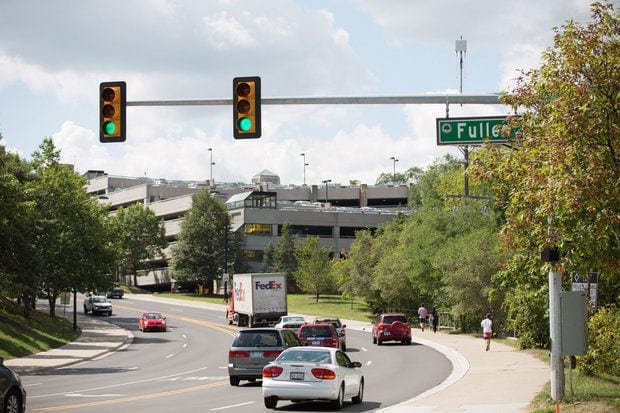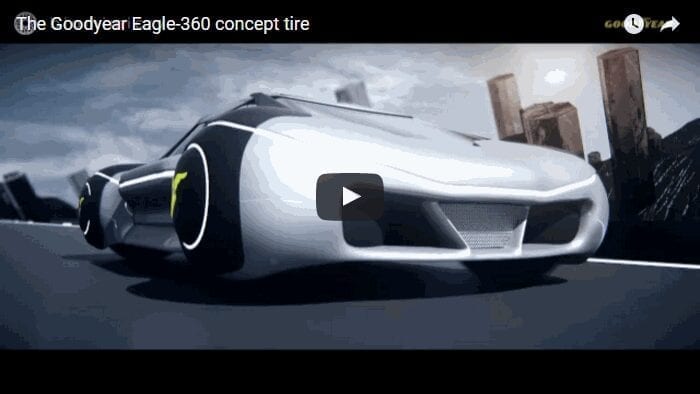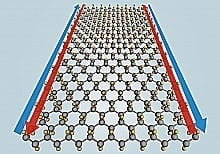
As it prepares to break ground on a $6.5 million test track, the new University of Michigan Mobility Transformation Center already has its sights set on taking over the roads of Ann Arbor.
The center, a cross-disciplinary collaboration, announced that it is aiming to put a fleet of connected and autonomous vehicles on public roads by 2021. If successful, the area would likely be the first in America to have a shared fleet of networked driverless vehicles.
U-M Transportation Research Institute director Peter Sweatman is also heading up the new center. He said that putting autonomous cars on the road is a process that will involve years of engineering work.
“We view automation in terms of progression of taking the feet off the pedals, hands off the wheel, eyes off the road, and eventually the bum out of the seat so that it’s completely driverless,” he said.
“Those stages are interesting and they’ll happen through time. We’ll have to go from one stage to the next.”
UMTRI already has a head start on connecting vehicles. The institute is running an $18 million pilot program sponsored by the U.S. Department of Transportation that put sensors into nearly 3,000 cars driven by Ann Arbor residents.
The sensors currently in cars and trucks on the roads of Ann Arbor are passive, gathering data by interacting with each other and sensors posted at busy intersections, around sharp curves and on local freeways. The goal of the MTC is to expand the ability of those sensors and eventually give them decision-making power.
“We think this tech is important because it’s so transformational,” Sweatman said.
“First and foremost, we can avoid most crashes. We can also avoid a lot of the stops vehicles make in traffic and we can design vehicles completely differently.”
Sweatman added that the new vehicle design will be possible because transmissions and engines will no longer have to be designed for use by humans. The processes can be streamlined as they are automated.
“They can become much lighter,” he said. “The design freedom that will come about from removing the normal considerations is going to create a lot of synergies in a lot of different areas.”
The possibility of substantially innovative vehicle design has attracted a number of automotive manufactures to the project, and also a host of other companies more peripherally attached to the automotive industry.
“We’re talking to a number of makers, but we regard this as a new ecosystem of companies that will be involved,” Sweatman said.
The Latest on: Self-driving cars
- Road to safer self-driving cars is paved with deep learningon May 8, 2024 at 10:34 pm
Breakthrough in understanding confidence levels in deep learning AI has implications for fields ranging from transportation to healthcare.
- Research casts new light on bike safety in the age of self-driving carson May 8, 2024 at 12:40 pm
Equipping self-driving cars with external displays that use colored lights to communicate their next maneuver could help keep cyclists safe on the roads of the future, researchers say.
- Self-driving wheelchairs could soon be reality, inspiring independence for userson May 8, 2024 at 9:19 am
You've probably heard about self-driving cars, but what about self-driving wheelchairs? New technology offering increased mobility is being tested now in Chicago.
- Tesla's Self-Driving Robotaxis May Get a China Rollout Firston May 8, 2024 at 8:43 am
A state-owned newspaper revealed that Elon Musk's moonshot Tesla vehicle may soon be self-driving through Chinese streets.
- The main reason why self-driving cars are not ready for prime timeon May 1, 2024 at 4:01 pm
"It's like trying to send a rocket to the moon in 1910 when the Wright Brothers were still working on their planes," one expert said.
via Bing News
The Latest on: Autonomous car
- Here’s When Daimler May Launch Autonomous Truckson May 9, 2024 at 10:05 am
Driverless trucks now seem closer than ever, but are all US states ready for them? Here’s what Freightliner has just revealed.
- Drone and autonomous vehicle food bank deliveries lift off in Arlingtonon May 9, 2024 at 9:05 am
A CLEVON 1 autonomous delivery vehicle makes its way around the Bob ... “We had a population of thousands that was stuck at home, so they could watch on TV tens of thousands of cars at AT&T Stadium, ...
- A 'hesitant' and 'confused' car? Driverless car turns into oncoming trafficon May 8, 2024 at 2:44 pm
A video shared thousands of times on social media shows the car driving into oncoming traffic in Tempe. However, an ASU professor says the cars are still safe.
- Exclusive: Wayve co-founder Alex Kendall on the autonomous future for cars and robotson May 8, 2024 at 11:01 am
U.K.-based autonomous vehicle startup Wayve started life as a software platform loaded into a tiny electric "car" called Renault Twizy. Festooned with ...
- Autonomous car company Glydways to bring driverless public transit to East Contra Costaon May 7, 2024 at 6:52 pm
Public transit has struggled to recover its pre-pandemic ridership, but an autonomous car company has a driverless transportation system that could make East Contra Costa County a leader in modern ...
- A 'hesitant' and 'confused' car? Driverless car turns into oncoming traffic in Tempeon May 6, 2024 at 10:41 pm
TEMPE, Ariz. — Pulling up next to an autonomous car is becoming a normal occurrence for drivers in the Valley, but there are some moments that can't help but catch people by surprise. One of those ...
- Inside the Autonomous Racing League event that pitted a self-driving car against a Formula 1 driveron May 4, 2024 at 9:00 am
Modern teams are awash in real-time digital feedback from the cars. The A2RL, as it is known, is not the first autonomous racing series: There's the Roborace series, which saw autonomous race cars ...
- Waymo to begin testing driverless cars in Peninsula in coming weekson May 3, 2024 at 9:00 am
Drivers navigating traffic on El Camino Real could soon have new cars to contend with, but no one to direct their road rage at: Driverless cars are coming to the Peninsula. Autonomous vehicle company ...
- Chemists develop highly reflective black paint to make objects more visible to autonomous carson May 2, 2024 at 6:12 am
Driving at night might be a scary challenge for a new driver, but with hours of practice it soon becomes second nature. For self-driving cars, however, practice may not be enough because the lidar ...
- Man Beat Machine in the First Human/Autonomous Car Race—But for How Much Longer?on May 2, 2024 at 1:30 am
It was the inaugural event for the Abu Dhabi Autonomous Racing League, or A2RL, a historic test that not only gridded four autonomous race cars against each other on a road course but also pitted a ...
via Bing News










